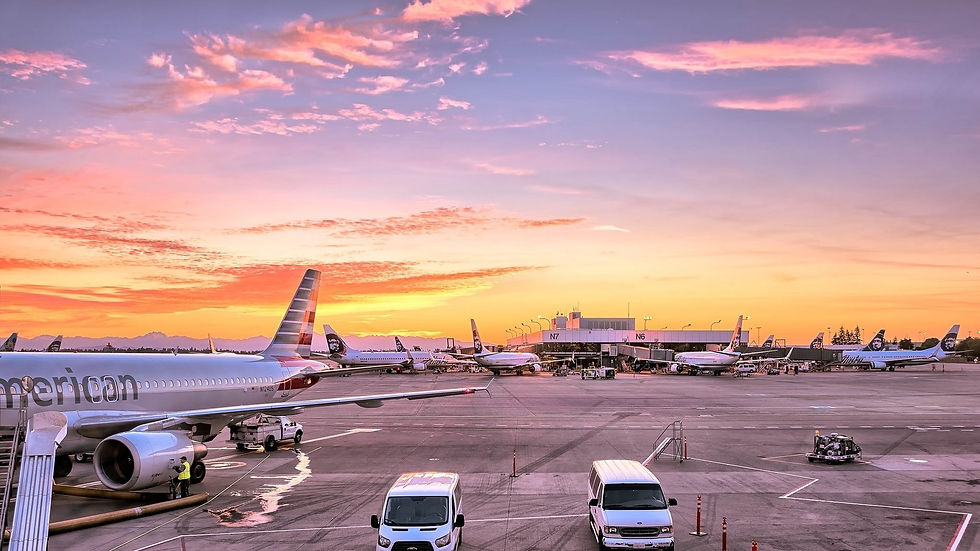" Wilco.. Cactus 1123"
- Captain Alexander
- Sep 10, 2021
- 3 min read

The title of this article reflects how typical communication between flight crews and
ATC (Air Traffic Control) pans out on a day to day basis.
Messages are truncated and standardized words and phrases are used, all for the purpose of making communication short, clear and effective.
There are a number of reasons behind this, one of them being that English, although being the preferred language of communication in aviation, is not native to many aviators around the world and so, in a bid to standardize communication all across the board, words and phrases have to be constructed in such a way that even those with a limited proficiency in English can understand the message being put across
NB: (The FAA (Federal Aviation Authority) and ICAO (International Civil Aviation Organization), the world's organizations overseeing aviation, require all pilots flying under their organizations to have attained ICAO “Level 4” English ability and so one has to take some sort of English proficiency classes before flying if they do not have a good command of the language)
Another reason is that high traffic turnover contributes to there being a need to having communication being carried out a certain way. In airports, particularly those with high density traffic, where aircraft land and depart within 3 minutes of each other, there simply is no time for having long drawn out conversations between ATC, flight crew and ground crew.
In fact, at such airports and airspaces, many other flight crew apart from you may be requesting and receiving instructions all within a short window of time. On top of that, sometimes radio communications are not 100% audible, and so if you come in with too much unnecessary wording, you may throw off ATC and other traffic listening in, and can potentially cause an accident.

Below are some common words and phrases used over the radios and their meanings.
Phrase Meaning
Wilco Will comply to your request
Standby Wait and I will call you
Roger I have received your transmission loud and clear
Go around Abort the landing, climb and wait for further instructions
Hold Short Hold your position before entering the runway area
From this, you see how just a word or two carries a lot of meaning and replaces an entire sentence that would have otherwise been spoken over the radio, thereby saving time and making communication clear and easier to understand.
On this last bit, I'll tell you about aircraft call signs , like the one you see in the title (i.e:Cactus).
You can look at call signs as a sort of airline nickname. Some airline names may be a mouthful to call out, and in the spirit of making communication clear, airlines are assigned with names in accordance to FAA/ ICAO regulations which will be used to identify the airline. Some airlines opt to maintain part of the airline name in identification while others, being more creative, come up with names that stand out and are easier to communicate.
It is also worth noting that call signs cannot be changed during flight unless in the interest of safety and under the instruction of an air traffic control unit. This change is only temporary.
Check out this list of well known airlines and their call sign
Callsign Airline
Cactus US airways
Springbok South African Airways
Dynasty China Airlines
Speedbird British Airways
Shamrock Aer Lingus
As mentioned before, all this is done to facilitate easier communication. The back and forth between ATC and flight crew involves a lot of repetition in order to have everyone on the same page, and as such, anything that might pose a challenge to communication, such as a long airline name is modified or truncated.
Here's an example of a typical dialogue between ATC and an airline with a long name.
AIA: Wilson ground, Alexander International Airlines 3450 requesting taxi for departure to Mombasa with 40 souls on board.
WG: Alexander International Airlines 3450, taxi to and hold short of runway 14 via taxiway Alpha, Bravo, Charlie 1 and caution departing Fokker 50 on taxiway Bravo. Contact tower on 118.30 when ready.
AIA: Taxi to and hold short of runway 14 via taxiway Alpha, Bravo, Charlie 1 and caution departing Fokker 50 on taxiway Bravo. Contact tower on 118.30. Alexander International Airlines 3450.
As you go through this brief dialogue, you can already see how reading out the full airline name and flight number tends to lengthen the conversation and wastes valuable talking time.
Now here's the same conversation of the same airline using a call sign (Lexy)
AIA: Wilson ground, Lexy 3450 requesting taxi for departure to Mombasa with 40 souls on board.
WG: Lexy 3450, taxi to and hold short of runway 14 via taxiway Alpha, Bravo, Charlie 1 and caution departing Fokker 50 on taxiway Bravo. Contact tower on 118.30 when ready.
AIA: Taxi to and hold short of runway 14 via taxiway Alpha, Bravo, Charlie 1 and caution departing Fokker 50 on taxiway Bravo. Contact tower on 118.30. Lexy 3450.
And there you have it!!!... Keeping It Short and Simple.




Commentaires